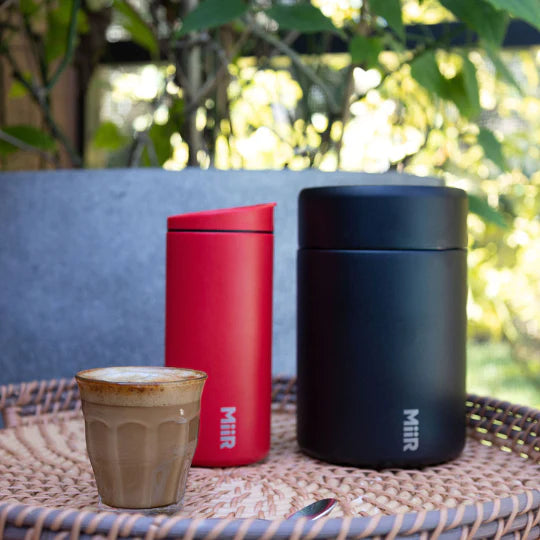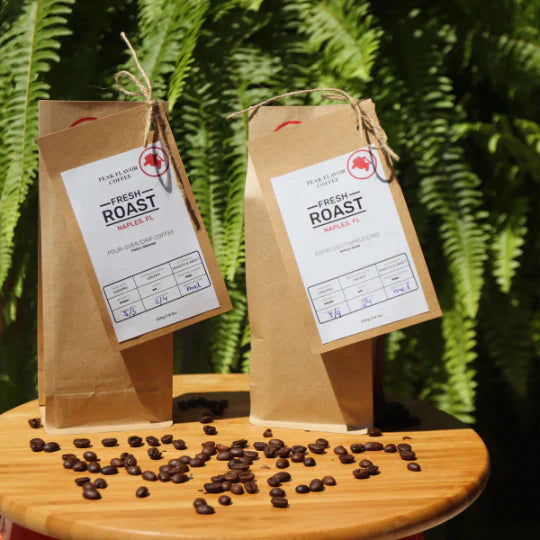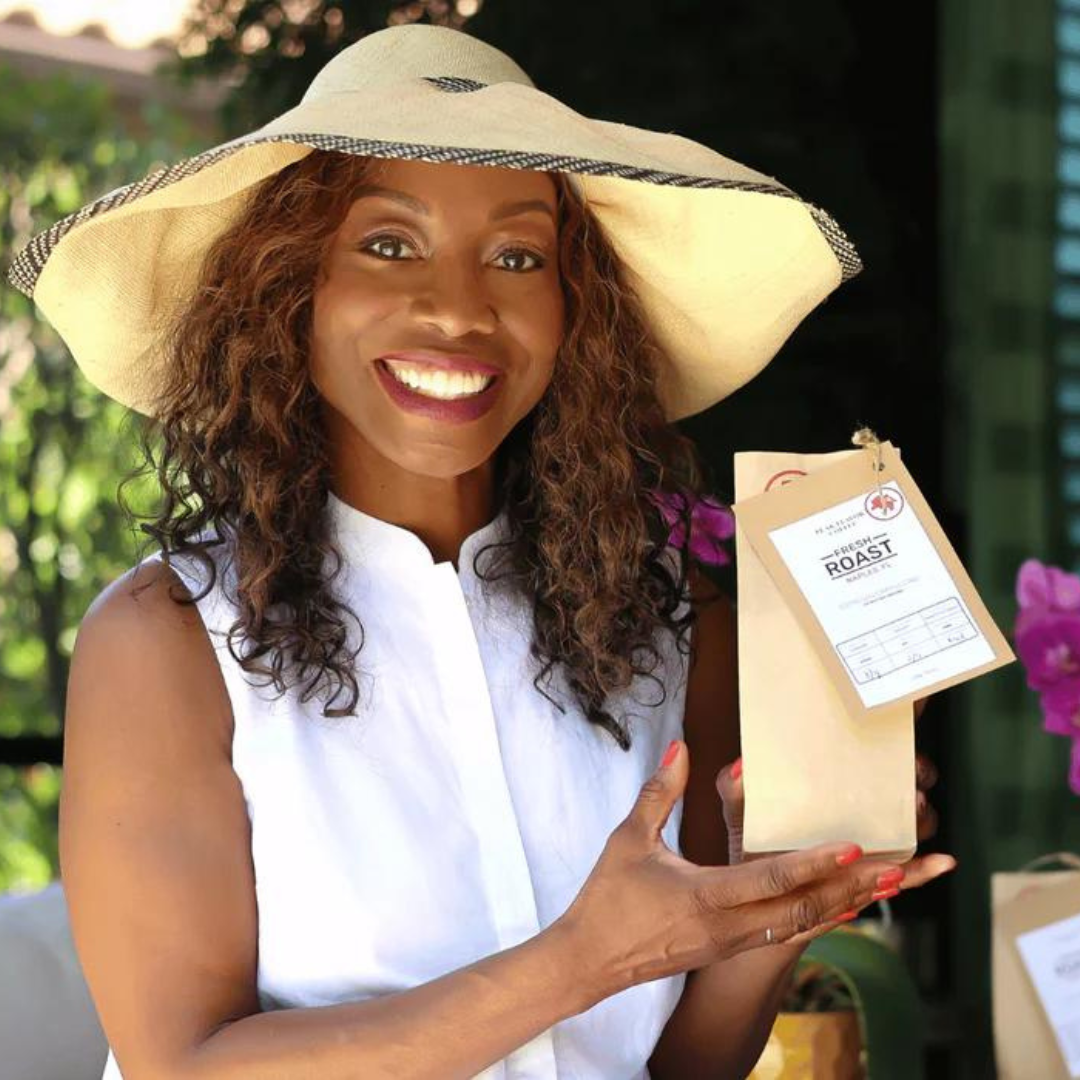In short, no need for expensive specialty coffee beans. It’s all about the right bean blend from the right origin, roasting fresh and using Italian roasting expertise to get natural sweetness without sugar, mildness without acidity and creaminess from the naturally occurring coffee bean oils.
5 tips to help you brew the perfect French Press Coffee at home.
Besides being delicious, French Press Coffee is the simplest and easiest way to brew indulgent coffee. Making excellent French Press Coffee at home is almost as easy as making tea if you follow these 5 tips:
- Select a blend of Arabica and Robusta beans from large origin countries. No need for expensive specialty beans to make an indulgent French Press Coffee.
- Buy and use whole beans, freshly roasted. A fresh roast is never roasted more than 8 days ago.
- Make sure your coffee was roasted the “Italian” way. Only Italian Coffee Roasting has an extended browning phase during which your coffee develops its natural sweetness and mildness.
- Grind only what you need to avoid oxidation. Use a course grind.
- Use a pre-heated French Press with a timer and make it bloom while you pour in the water. Allow coffee to steep for 3-4 minutes, so you can smell the richness of freshly roasted coffee bean oils.
Introduction
In America, we call it the “French Press”. In the UK, this coffee device is known as a cafetière, the word for “coffee-maker” in French. In other English-speaking nations, this device is called a “plunger”. But no matter how you call this home coffee maker, the French Press is known to coffee experts to deliver more aroma and flavor into your cup than many other home brewing methods. That is because it does not use a paper filter and therefore brings more of the coffee bean oils, which are rich in flavor and aroma into your cup. Coffee experts know this fact and therefore often prefer to make their home brew with a French Press. According to Statista, about 15% of US households use a French Press. Because of it’s richness in aroma & flavor, French Press coffee is one of the fastest growing coffee segments in the USA. But getting the right coffee for your French Press is not easy. You will be hard-pressed to find a coffee pack in your grocery store that is specifically blended, roasted and ground for your French Press coffee maker at home. It is even harder to find a roast, which is specifically designed for your French Press with fresh oils on the surface of the beans before being ground into a coarse grind.
I would like you to indulge at home in the best French Press Coffee possible. A French Press that is naturally sweet, mild, smooth, and creamy. If you want natural sweetness instead of sugar and chemical flavors, mildness instead of bitterness and smoothness instead of burnt notes, here is your guide to make the best French Press Coffee at home.
Tip 1: Use a blend of Arabica and Robusta coffee beans from large coffee producing countries.
If you want to avoid bitterness or burnt notes in your French press coffee, start with a fresh roast from the right beans. Although invented in France, the French Press was patented and developed for home-use in Italy in the early twentieth century. Italian household usage of the French Press is widespread because it is an economical method to brew high quality coffee at home without an espresso machine. For good French Press Coffee, there is no need for expensive, premium specialty beans. You can buy and use more common good quality beans for much less money and still achieve great taste. If you ask an Italian roast expert what the best bean blend is for French Press Coffee, they will likely tell you that you need to use a blend of 75% Arabica and 25% Robusta beans to get the perfect French Press coffee at home.
Arabica beans are generally considered to be of superior quality. But a small addition of Robusta beans will produce more bloom when you pour water into your French Press. The bloom is an essential part of high-quality French Press coffee. When you see abundant blooming, you immediately know that your coffee beans were the right blend and that they are freshly roasted. Blooming is a visual indication that the naturally occurring coffee oils are releasing their aroma for your perfect cup of French Press coffee. When tasting your French Press, you will notice a gentle mildness and natural sweetness caused by blooming.
Bean blends from larger origin countries, such as Brazil, Honduras, and Vietnam, are more likely to produce abundant blooming for the perfect French Press coffee at home. These blends are much preferred to the more expensive, rare specialty beans from smaller countries such as Rwanda, Burundi, or Togo. Coffee bean harvests from larger coffee countries are fresher and much easier to work with for mere mortals like me. Larger-origin countries also grow more consistent coffee bean harvests of better quality with fewer defects. Columbia and Indonesia also have larger bean harvests with more consistent quality.
Tip 2: Buy and use whole beans, freshly roasted. A fresh roast is never roasted more than 8 days ago.
Most importantly, for the perfect home-made French Press Coffee, your light-medium roasted whole beans should be freshly roasted. In its handbook for coffee freshness, the Specialty Coffee Association defines fresh roasted coffee as: “roasted within the past 8-14 days”. Once the expert roaster has done his (or her) roasting, roasted coffee beans need to rest for about seven days to develop their full flavor and get rid of excess gasses, a process called de-gassing. On day eight to fourteen after roasting, coffee reaches its best or Peak Flavor. Between day eight and day fourteen after roasting is therefore the best time to use the fresh roast to make your French Press Coffee.
Expert coffee roasters have no problem indicating the roasting date prominently on the front of their packaging. In fact, if you ask me, you should never buy a coffee brand that does not have a roasting date prominently displayed on the front. How else will you know when the coffee was roasted? And how else can you choose a fresh roast?
Roast freshness is the single most important “ingredient” in making a perfect French Press Coffee at home. Getting freshly roasted coffee at your home is difficult. On Average, most coffee packs on the grocery shelf, are 120 days past their roasting date. These “old” coffee beans make it difficult to get the perfect French Press Coffee at home. Some small, premium specialty and gourmet coffees in the grocery store could be even older because they sell at slower rates and thus sit on the shelf for longer. You can imagine that old grocery store coffee has lost most of its flavor by that time and turns stale, bitter and rancid. If your roast is not fresh, it is impossible to make great French Press Coffee.

If you want the perfect French Press Coffee at home, buying and using fresh roasted whole beans to ensure peak flavor is the most important thing to do. This is also why I encourage people to buy smallerpackages of coffee. Smaller packages of freshly roasted beans get used faster and ensure that your coffee stock at home does not get much older than 14 days post roasting. Buying & using whole beans instead of ground coffee is important to help you get a fresher roast because whole beans do not oxidize as fast as ground coffee. We’ll discuss oxidation a little later in this guide.
You can easily recognize the freshness of your coffee by the smell your coffee emits as soon as you open the package. Just like you immediately smell freshly baked bread at your local bakery, only a fresh roast, not roasted longer ago than 8 days, will emit the rich aroma that anybody can immediately recognize. Smelling your coffee when you open the package, is the easiest way to recognize a fresh roast in a second. Before you have even seen the roasting date on the pack.
Tip 3: Use an Italian Roast. Only Italian Coffee Roasting has an extended browning phase during which your coffee develops its natural sweetness and mildness.
There is a reason Italian coffee is generally considered the best coffee. Besides always being freshly roasted, the Italians employ an expert roasting technique that is designed to bring out natural sweetness and more aroma. To do this, you don’t need expensive specialty beans or premium coffee from origin countries you have never heard of. Using expert Italian coffee roasting methods, you can make any coffee bean deliver natural sweetness and mildness, no matter it’s origin. Italian roasters do this in two ways:
First, Italian expert coffee roasters extend the browning phase or “natural sweetness phase” of the roasting process. Generally, there are three phases in any coffee roast.
During the first roasting phase, green coffee beans lose their humidity until there is none left. The end of this phase is called “dry end”.
In the second phase of Italian coffee roasting, coffee beans start to turn color from green to brown. The reason for browning is called the “maillard reaction”, a well-known process whereby sugars (carbohydrates) caramelize and turn brown. Caramelization is the reason why your coffee beans are brown. If this process is rushed, the beans will acquire a burnt taste. If this second phase of the roasting process is extended at medium temperatures, like during Italian expert coffee roasting, more carbohydrates caramelize and your beans will acquire their natural sweetness. Italian roasting expertise in this second roasting phase, ensures you’ll need less added sugar, less milk-sugar (lactose), or artificial sweetener in your morning brew. It also ensures you can indulge in the perfect French Press Coffee at home.

In the third phase of Italian coffee roasting, the Italian experts roast well beyond “first crack” to release the natural coffee oils which contain most flavor and aroma. In this third and last roasting phase, the beans become gradually darker. This darkening is what most coffee amateurs in the USA speak about, when they talk about light, medium or dark roasts. Italian expert roasters, however, instead focus on making the beans “crack”. Sometimes even a second time when they roast for their espresso. Italian roasting expertise is straightforward on the subject. After “first crack”, coffee roasting enters its third phase. This “crack” literally opens the beans to release the natural coffee oils, which are full of aroma. You should know that aroma and flavor substances are mostly fat-soluble. This means that only if your roasting manages to release the natural fats (oils) from the beans, you’ll unlock the best taste from coffee beans. Breaking off the roast now for a light or medium roast prevents the beans from releasing these natural oils and from developing their full flavor. Expert Italian roasters will roast close to the second “crack” to ensure all flavor, oils, and aroma are released whilst preventing acidity and/or burnt notes. Large coffee roasters often can’t afford to take the time to wait for the second crack. This is exactly why some famous coffees taste a little burnt or sour and need lots of sugar or flavoring.
Tip 4: Grind only what you need to avoid oxidation. Use a course grind.
Coffee’s exposure to air causes it to lose taste and aroma. In scientific terms, this natural process is called oxidation or “exposure to air.” We all know how a sliced apple starts to look and taste worse when we leave it on the table. After the apple slices are exposed to air (oxygen), the apple turns brown and tastes stale. The same is true for coffee beans. Once ground, oxidation accelerates as the exposed surface to the air has increased. The coffee taste and aroma will start to deteriorate over time.
Ideally, you grind your fresh roasted coffee beans yourself, just before you brew in the exact amount needed. Doing this will limit oxidation of your coffee and therefore preserves flavor, taste, aroma and freshness when you pour the French Press coffee in your cup. A coarse grind is the right grind for the best French Press Coffee. A coarser grind will release the essential oils in coffee while you brew, delivering body and creaminess. If you don’t have your own grinder, make sure your roast is fresh. Never older than 8 days past the roasting date. Using older, ground coffee from the grocery store will make it impossible to get the best French press coffee at home.
A coarse grind is important because the French Press brews coffee by immersion. As a result, the coffee is exposed to hot water for 3-4 minutes, a relatively long time compared to the 30 seconds it takes to make an espresso. To slow down flavor extraction and avoid over-extraction during the 3-4 minute French Press brewing process, a coarse grind (est. 3mm) is the perfect grind.
Tip 5: Use a pre-heated French Press with a timer and make it bloom while you pour in the water. Allow the coffee to steep for 3-4 minutes, so you can smell the richness of freshly roasted coffee bean oils.
Once you are sure to have coarsely ground fresh roasted coffee, pre-heat or warm-up your French Press container with some warm water. Once warmed up, empty the French Press, put in the fresh roasted, coarsely ground coffee and slowly pour over fresh, boiling water to brew your perfect French Press Coffee.
Brewing in this case, means slowly immersing the coarse ground in boiling water by pouring it slowly over all the grounds. If you are using freshly roasted, coarsely ground coffee you will notice that an abundant, thick bloom will start to develop. This is the visual sign that you have a fresh roast. The bloom also indicates that the naturally occurring oils in the coffee release their aroma and flavor, making your French Press Coffee into an indulgent morning brew.
Getting the right ratio of coffee to water is key to brewing the best French Press Coffee. We recommend using 1 gram of coffee for every 10-12 grams of water. Simpler put, use 1 unit of coffee for every 10 units of water. Examples include 1 cup of coffee for 10 cups of water. Or 1 tablespoon of coffee for 10 tablespoons of coffee. Or 1 Oz of coffee for 10 Oz of water. Our recommended 1:10 bean/water ratio, is best for our fresh roasted bean blend. If you use older beans, you need a different ratio to get any taste. Different ratios apply for more expensive specialty beans and specialty coffees.
Wait an estimated 3-4 minutes to give the freshly roasted grounds the opportunity to release all of their aromas, flavors, oils and creaminess into the water. Leave it a little longer and your French Press taste gets stronger. Leave it shorter, and your brew will be milder. If you feel you have waited too long and you think your brew is too strong, feel free to add a little boiling water to the mix to get to the desired strength.
We recommend you find a French Press Coffee maker with a timer. We have a sand-hour-glass in the handle of our French Press. We recommend using a Bodum French Press Coffee maker. It is efficient, easy to clean, has an hour-glass in the handle and helps you make the best French Press.

In summary, using fresh roasted and coarsely ground beans from larger coffee origin countries is the key to getting the best French Press Coffee at home. Besides being fresh roasted, for the best French Press Coffee at home, it is important that your coffee is roasted with Italian expertise to have natural sweetness, mildness and creaminess from the naturally occurring coffee oils. No need to use expensive specialty beans to get the best French Press Coffee at home. French Press Coffee is the easiest way to make excellent quality coffee at home because it immerses the coffee grounds in water for some time, which allows the oils to release their aroma and flavors to the utmost. You can clearly see if you are successful judging by the amount of rich blooming you’ll have. Using a fresh roast, roasted the Italian way will get you to enjoy the best French Press Coffee every time you brew.
Try our French Press Coffee for yourself. I am sure you’ll love it.
Melicent













